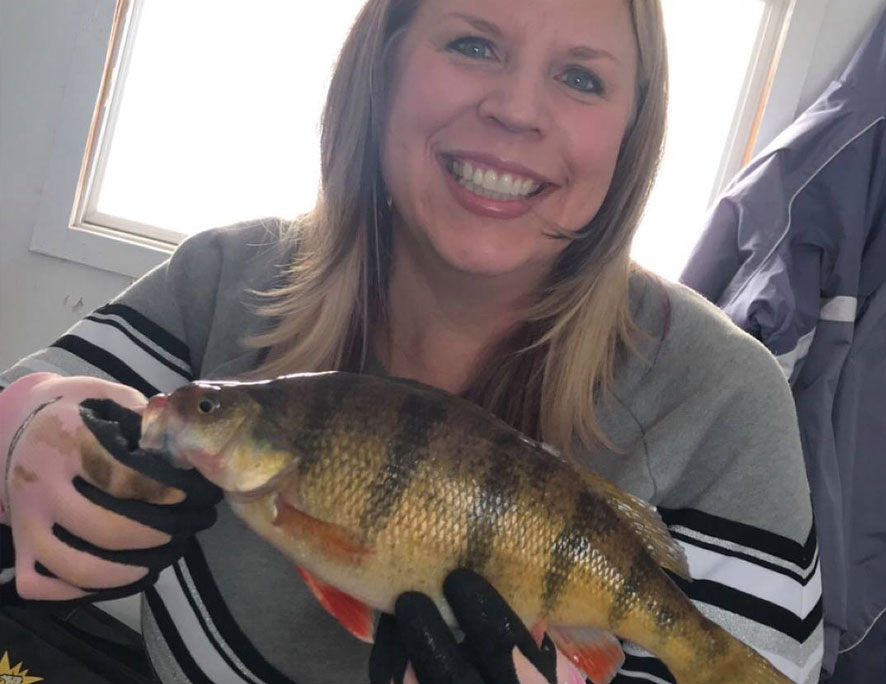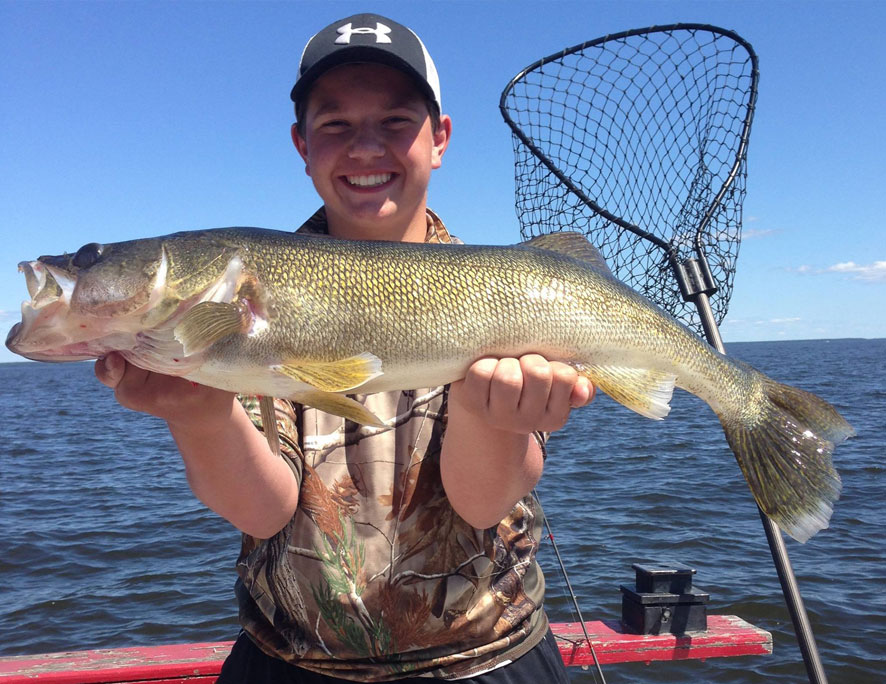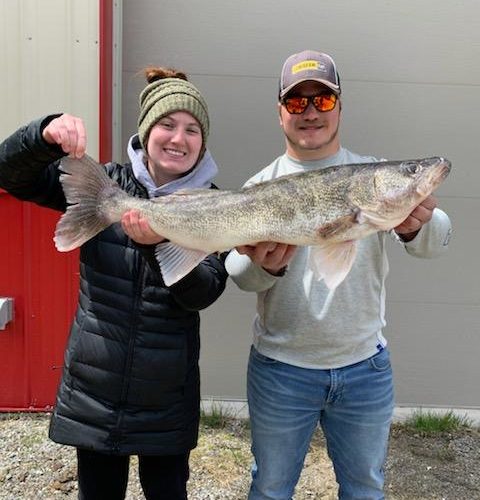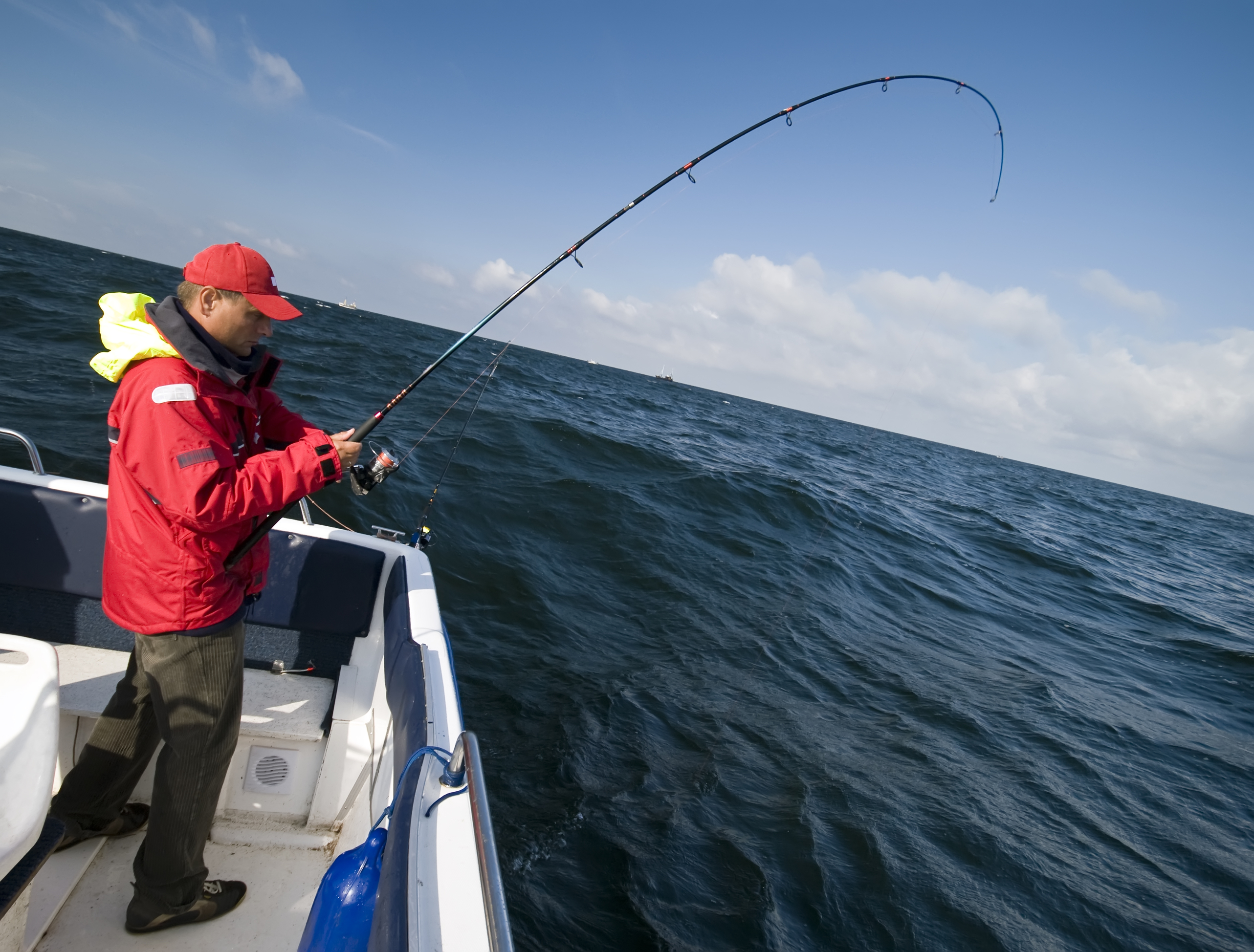Lake of the Woods Map
Cyrus resort is located on Bostic Creek (or Bay), which is situated on the southern part of the lake.
Map provided by Navionics.

SPECIES YOU'LL FIND ON LAKE OF THE WOODS
Pack your gear and head to Cyrus Resort, the best kept secret on Lake of the Woods!
Lake of the Woods Map
Cyrus resort is located on Bostic Creek (or Bay), which is situated on the southern part of the lake.
Map provided by Navionics.

Walleye

Walleye (Sander vitreus):
Walleyes are the most sought after fish in Minnesota. Fishing for them is our specialty! Its thick, white fillets, handsome shape and coloring, and elusive nature make it the ultimate prize among anglers.
Body patterning, color, and scales: Back and sides brown, olive, or goldish-yellow with faint to moderately dark mottling and irregular blotches; belly cream or white.
Typical Size: 15-24″
Maximum Size: Roughly 33″
Sauger

Sauger (Sander canadensis):
Often times called a “sand-pike,” many people confuse Saugers for Walleyes. You can tell the difference by looking at the top fin. A sauger’s top fin has small black dots on it. They taste the same as walleyes as they are very similar fish.
Typical Size: 12-18″
Maximum Size: Roughly 23″
Northern Pike

Northern Pike (Esox lucius):
Big or small they are one of Minnesota’s most fun fish to catch. You’ll find this voracious predator in nearly every lake and stream in Minnesota. It is one of the easiest fish to catch because of its willingness to bite lures or bait!
Body patterning, color, and scales: Yellow-green, light olive, or cream oval spots on a darker olive or green background, in a reticulated or chain-like pattern. Belly cream or white.
Typical Size: 20-36″
Maximum Size: Roughly 50″
Sturgeon

Sturgeon (Acipenser fulvescens):
These prehistoric fish are making a huge comeback in the Rainy River! The lake Sturgeon is a long-lived, slow-growing, late-maturing fish species.
Body Pattern: Dark brown to black mottled color on back and flanks with white undersides. No scales. Sturgeons have a fairly distinctive body shape with scutes and an inferior mouth.
Typical Size: 25-60″
Maximum Size: Roughly 78″
Yellow Perch

Yellow Perch (Perca flavescens):
Yellow Perch are good to eat and unlike their cousin, the Walleye, they eagerly bite. The trick is finding Perch large enough to fillet.
Body Pattern: Back is brown or greenish. Its sides are olive or yellow with 6-8 thick dark vertical bars. Their bellies are cream/off-white.
Typical Size: 6-12″
Maximum Size: 17″ approx.
Burbot or Eel Pout

Burbot or Eel Pout (Lota lota):
Burbot can be found in most Minnesota northern lakes and rivers. They are good indicators of a healthy watershed. Typically they require water temps lower than 70 degrees during the summer and are a rare catch, but come winter-time, these predators come alive and are most active! Burbot can be handled by placing a firm grip just behind the head. Their teeth are much like largemouth bass, like rough sandpaper. Don’t be shocked when our eel-like looking friend, uniquely and harmlessly, wraps its body around your forearm. It’s just their way of greeting you.
Body patterning, color, and scales: Solid brown, yellow, or black or darkly mottled with irregular blotches; cream or yellow on belly.
Typical Size: 12-24″
Maximum Size: Roughly 32″
Crappie
Crappie (Pomoxis):
These fish are another great option for eating if you are lucky enough to land on a school of them. Crappies are considered popular pan fish and typically reside on top of structures or reefs.
Body Pattern: Crappies are mostly silver and have black speckles scattered across the entire fish with their back is more concentrated with black.
Typical size: 12″
Maximum size: 17″
Bass (Smallmouth & Largemouth)
 Smallmouth (Micropterus dolomieu) & Largemouth Bass (Micropterus salmoides):
Smallmouth (Micropterus dolomieu) & Largemouth Bass (Micropterus salmoides):
Bass are super fun to catch because they fight aggressively. If you love to cast, this is the type of fish you are going to want to target. Bass are apart of the sunfish family, similar to crappies. You can catch either type by casting crankbaits toward rocky shorelines or weed beds.
Body Pattern: These types of bass are primarily dark to medium green with cheetah-like darker green spots on its sides. They have cream to off-white bellies.
Typical size: 12-21″
Maximum size: 27″ approx
Lake Trout
Lake Trout (Salvelinus namaycush):
This fish is another fun catch if you are up for a fight! Lake trout typically reside in water reaching hundreds of feet deep on Lake of the Woods. They are common to catch on the Canadian side of Lake of the Woods and in other small, deep water lakes in Canada. Lake trout have been caught on the southern half of the lake but it is quite rare.
Body Pattern: Lake trout are mostly dark green with cream to off-white colored bellies. They have light spots scattered on their sides as well with orange tipped fins.
Typical size: 19″ approx.
Maximum size: 59″
Muskellunge
Muskellunge (Esox masquinongy):
Muskellunge, more commonly known as Muskies, are hefty bodied fish with gnarly mouths full of sharp teeth. These fish typically stay up north near and in the Canadian side of Lake of the Woods since they prefer certain features that aren’t found on the south side. Similar to lake trout, muskies have been caught on the southern half of the lake but it is quite rare.
Body Pattern: Muskies look much like a northern pike. However, they do not have the yellowness in the body and fins that northern pike do. Muskies have pink-orange tinged fins. Their overall coloration may vary slightly fish to fish. Muskies are also more solid and muscular compared to northern pike.
Typical size: 37-45″ approx.
Maximum size: 55″
Source of information:
- www.fws.org – US Fish and Wildlife Service
- www.adfg.alaska.gov – Alaska Department of Fish and Game













